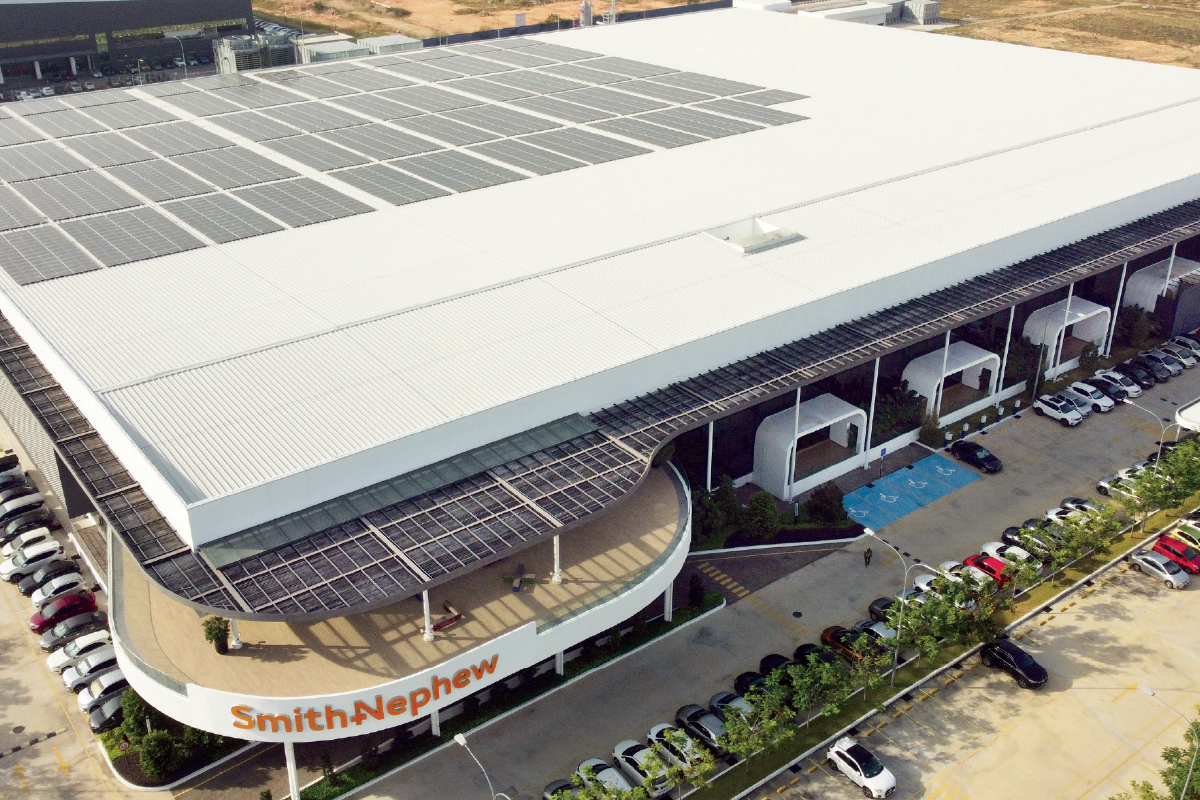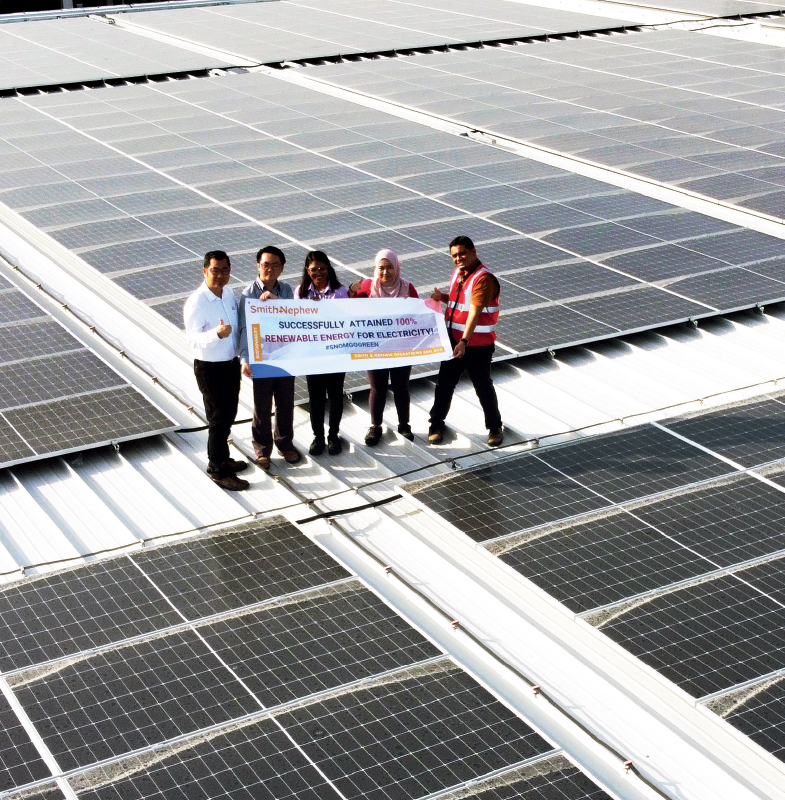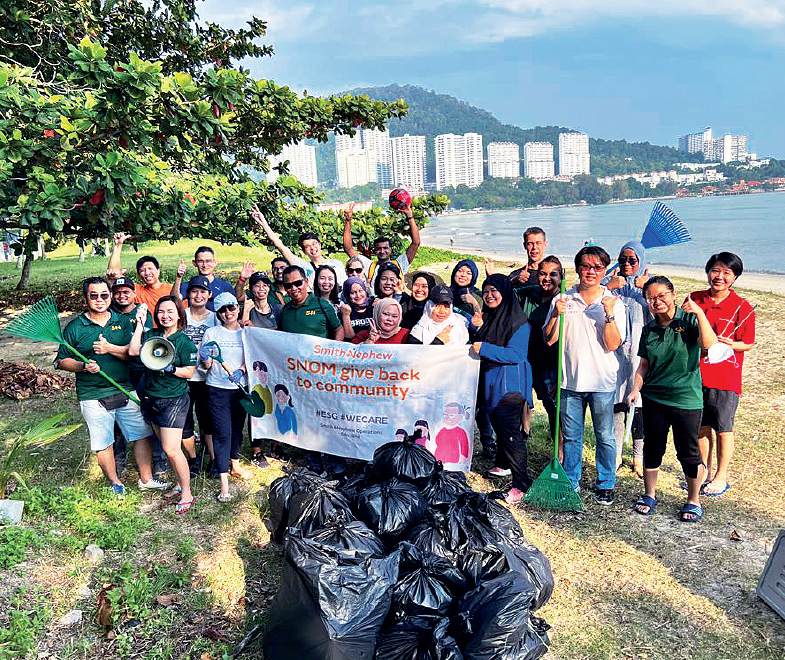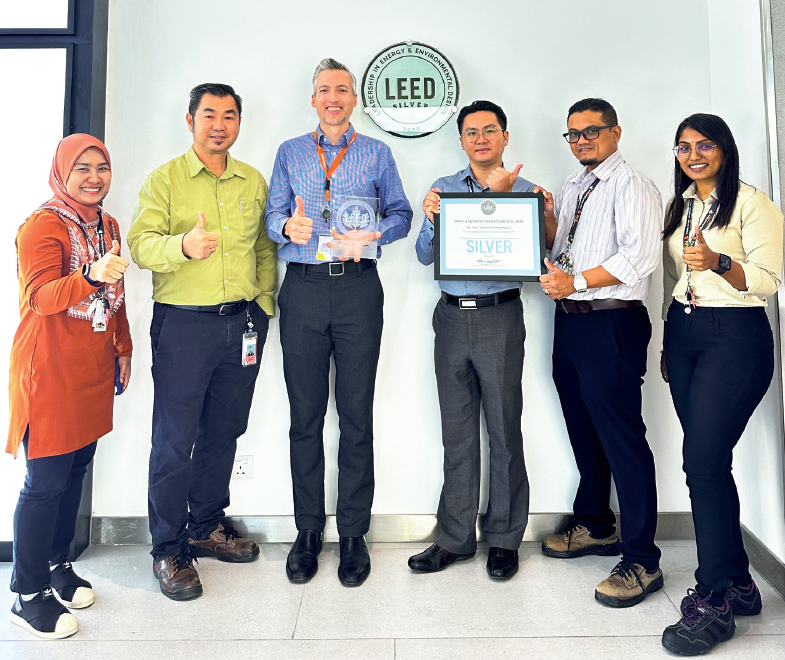
This article first appeared in The Edge Malaysia Weekly on November 6, 2023 - November 12, 2023

When Smith & Nephew plc made its maiden foray into Malaysia in 2020, ensuring that the new manufacturing plant and the operations met the company’s goals of minimising its ecological footprint was non-negotiable.
“As a manufacturer of medical devices, we make people’s lives better, so if the way we make and distribute these things is causing more harm than good, it doesn’t look good on the overall image of the corporation. For us, sustainability means doing right by our people, planet and ensuring the products are as sustainable as can be,” says Smith & Nephew Malaysia managing director and site leader Mark Arthun.
Its 250,000 sq ft high technology manufacturing facility located in Batu Kawan Industrial Park, Penang, was completed in June 2021 and built with sustainability in mind.
The facility uses sustainable materials such as energy-efficient lighting and appliances, water-saving fixtures such as rainwater harvesting systems, charging facilities for electric vehicles and a roof that can accommodate solar panels.
It is guided by the US Green Building Council’s Leadership in Energy and Environmental Design (LEED) and attained the LEED Silver certification this year, becoming the third manufacturing plant in Penang to receive this acknowledgement.
The Penang facility has also achieved the goal of zero waste-to-landfill, the first in the Smith & Nephew group to do so globally. Through waste management initiatives, the waste generated from its operations — metals, plastics, paper and wood — is diverted away from the landfill. This goal was achieved four years ahead of its corporate sustainability target.
Finding champions in the company
The company kicked off its sustainability initiatives with the establishment of an environment, social and governance (ESG) committee comprising employees from various functions who have one thing in common: a passion for sustainability.
Senior manager for health, safety and environment (HSE) Ng Chee Wei is one of the members, with Aurthur serving as the sponsor, who ensures the team gets the budget they require and executes the initiatives.
One of the committee’s key tasks was to understand and identify the waste streams of the facility, which produces orthopaedic products.
“To understand our waste streams, we researched the ways these wastes can be recycled or recovered. We worked with partners externally and internally to determine the right suppliers to work with — those who have the capability to carry out the recycling and recovery for us. We’ve also registered them as our vendors and carried out audits to ensure that they have the capability and capacity to recycle the waste,” says Ng.
Practising Zero Waste
The facility is fortunate in that the main by-products of its manufacturing operations are expensive, high-quality materials that boast a high potential for a new lease on life.
For instance, metal shavings such as cobalt chrome are sold to a metal recycler for smelting and eventual reuse. As for other wastes such as coolant, plastic and paper, the company pays for these to be recycled. At the manufacturing facility itself, many recycling bins have been strategically placed to enable easier waste segregation and ease recovery.
As the facility ramps up production, the waste it generates is expected to rise. But the facility, says Arthun, will continue to maintain its zero waste-to-landfill stance.
The company established a chemical management protocol. Any new chemicals being considered for use must be first evaluated by the HSE department. This is to ensure that hazardous materials are not introduced, even in trace amounts, into the processing plant in Penang.
The company has also spent an estimated RM5.4 million on environmental pollution control systems, including an evaporator system equipped with activated carbon to treat industrial effluents. “All wastewater goes through performance monitoring to ensure that it is safe to be released,” says Ng.
The production plant has 10 units of milling machines that use an air purging system and dust collector, dispensing with the need for chemical coolants. “For air emissions, we have a scrubber connected to a chimney to filter out all the acid fumes from one of our processes. It is equipped with online monitoring to ensure that the emission is always below the standard permitted,” adds Ng.
In addition, the company has been able to meet 22% of its total electricity needs through the 1.4MW solar photovoltaic system that occupies 60% of its roof space.
Energising the people
The key to the company’s success in implementing sustainability initiatives is having a team of people who are truly passionate about safeguarding the environment.
“In our success, we found not just one but two people who are critically passionate about ESG: myself and Chee Wei. It was not by design that I was selected [for this role] because of my passion for ESG and it was not by design that Chee Wei was selected because of his passion for ESG,” says Arthun, describing the circumstance as a wonderful coincidence.
“We’ve set targets to differentiate ourselves from the corporate communities in Malaysia as well as other Smith & Nephew operations and our competitors, and through these top-down goals, we have achieved these successes.”
Arthun traces his sustainability ethos to his background and experience. “I grew up on a cattle ranch in Montana in the US. As a cattle rancher, you’re basically managing an ecosystem. You can’t overgraze; you need to ensure appropriate access to water; you need to ensure that the cattle aren’t ruining the water sources and polluting the water streams.”
All that is part of creating a natural ecosystem, he adds. “And just through this mini environment that I created with my family, I know how much influence humans can have on the environment. I learnt that if we’re not responsible stewards of the environment in which we live, we will all suffer greatly. There is no doubt that climate change is real and that we’ve been abusing our planet for many decades. We need to do our best as corporate citizens to manage our planet just as my family managed the ranch.”
As for Ng, his background in environmental technology provided exposure to climate change and global warming. “My university studies and documentaries like Al Gore’s An Inconvenient Truth shaped my thinking about the environment and sustainability, and I used to do beach clean-ups, for example, on my own. Now I have a big group and the resources and influence to do more,” he quips.
Arthun adds that employee engagement with the company’s sustainability initiatives has not been a hard sell. “The employee base today is no longer in denial of climate change or global warming and it’s now becoming more and more central to their employment. It is the same with me. I really aligned fundamentally in principle with the company and its values, and this is something that is increasingly evident in the workplace.”
Continue to be pioneers
In the medium term, Ng says the plan is to achieve a 70% reduction in its Scope 1 and 2 emissions by 2025, which refers to direct and indirect emissions; and hitting net zero by 2040 for these emissions and for all emissions by 2045, including those from its value chain.
According to Ng, the company is preparing for an assessment of its Scope 3 emissions, which it hopes to complete next year. To address Scope 2 emissions, the company is pursuing an ISO 50001 Energy Management System certification. The company’s purchase of renewable energy certificates also complements its Scope 2 carbon reduction journey.
Although the country’s power grid, which is still reliant on fossil fuels, has been a challenge for the company to meet its renewable energy goals, there have been some positives in the journey thus far. “The availability of vendors and the infrastructure to support zero waste-to-landfill has been a positive surprise,” says Arthun, pointing out that some of the company’s sister sites globally are finding it difficult to tap suppliers who can recycle waste. “But that’s not been the case here; there are definitely opportunities for the green economy in Malaysia.”
Save by subscribing to us for your print and/or digital copy.
P/S: The Edge is also available on Apple's App Store and Android's Google Play.



